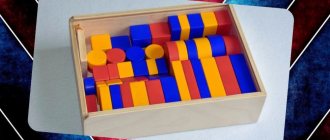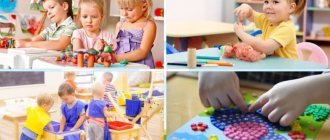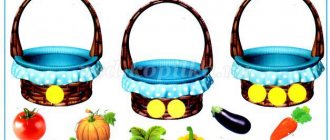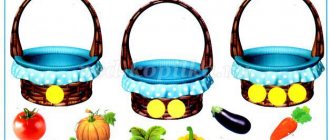Card file “Didactic games on life safety rules at home”
“Didactic games on
life
safety rules at home”
.
In order to make the child active in acquiring knowledge, it is proposed to accumulate, deepen and systematize it mainly through didactic games
.
The advantage of using educational games,
in comparison with classes to enrich knowledge about life safety rules as a component of safety precautions in everyday life, it is manifested in the following: each child is as active as possible;
there is an opportunity to differentiate and systematize children’s knowledge (depending on their current level, since the games were held with a subgroup (from 2 to 8 people)
or individually; maintaining a stable interest of schoolchildren in this activity and a high emotional background.
Selected d
educational games provide the opportunity to: introduce children to sources of danger in everyday life, clarify and systematize these ideas, teach them to distinguish potentially dangerous objects; form ideas about precautionary measures and methods of safe behavior; introduce the necessary actions in case of danger.
At the same time, attention is actively developed so that the child can anticipate threats and take care of his life and health. The use of game attributes, visual aids (plot and subject pictures, incentive prizes) evokes the desire of schoolchildren to play and activates their mental processes. A positive assessment from the game character and adults allows the child to confirm his correct understanding of the norms of safe behavior.
“Pick up a toy for Tanya”
Tasks:
consolidate ideas about household objects that can/cannot be played with; develop attention; cultivate a sense of mutual assistance.
Material:
— a game card with a picture of a girl and “fun”
little men;
- pictures depicting various household items and toys.
Progress of the game:
the teacher offers to help Tanya choose from the objects shown by the funny little men those that can be played with; explain why you can't play with the others.
“One, two, three, find what could be dangerous”
Tasks:
consolidate ideas about sources of danger in the house; develop intelligence and attention; foster a sense of camaraderie.
Rule:
do not push, do not take objects from each other.
Material:
layout or game corner with household items, prizes
(chips or pictures )
.
Progress of the game.
The teacher, or Stobed, or the child turns away and counts to 3-5 (if necessary, up to 10, and during this time the children must take from the model or in the play corner those objects that, in their opinion, may be dangerous. Then everyone explains their choice.Answers are rewarded with prizes.
“What do we know about things?”
Tasks:
expand children’s understanding of the rules of safe behavior at home; develop attention and memory; foster a sense of cooperation.
Material:
* four game cards depicting a cut, burn, hand bruise and fire;
* pictures depicting various household items.
Progress of the game.
4 children take part in the game, each of them takes a game card with the image of
an “injury”
.
The teacher (hereinafter referred to as the child)
is the leader.
He picks up a picture of an object one by one. Participants must guess what injury could result from improper handling of this item, match it to their card and take the picture .
When selecting, the child must explain why this or that object is dangerous and tell the rules for handling it.
"Snail House"
Tasks:
generalize children’s ideas about the rules of safe behavior; develop protective self-awareness; foster a sense of cooperation and strengthen numeracy skills.
Rule:
keep the order.
Material:
a playing field with a picture of a snail, inside of whose house various household items are drawn; chips; cube.
Progress of the game.
Children take turns throwing the dice and moving their piece by as many spaces as there are dots on the dice. Each player talks about the picture on which his chip stands: what is depicted, the rules for handling this item.
"Connect the dots"
Tasks:
consolidate ideas about sources of danger in everyday life; develop fine motor skills, strengthen the skills of using a pencil, the ability to draw a line along the dots; develop the ability to complete a task that has been started.
Material
: sheets depicting the contours of objects
(from dots)
.
Exercise:
connect the dots, color and tell why this item is dangerous.
"Put it in its place"
Tasks:
consolidate ideas about the rules of safe behavior, develop knowledge that for safety all objects must be put back in their place; develop observation and attention; cultivate a desire to maintain cleanliness and order at home and in kindergarten.
Material:
playing field with a picture of a kitchen; pictures-objects.
Progress of the game.
The box contains pictures of objects
(image down)
. Each child takes one picture and puts it on the playing field - in place, explaining his choice.
Options.
* “Scattered”
pictures-objects
.
Children take turns putting them in place.
* On the layout, put all the items in their places, first in the “kitchen”
, and then throughout
the “apartment”
.
* The same in the play corner.
“So and not so”
Tasks
: learn to distinguish life-threatening situations from non-threatening ones; develop attention; cultivate a desire to comply with safety rules.
Material:
* 2 cards - with a red and a green circle,
* pictures depicting dangerous and safe actions of children.
Rules:
Under the red card
(circle)
put pictures depicting life-threatening actions of the child, under the green card - non-hazardous
(allowed) ones
.
Options:
* individually with the teacher,
* several children take turns explaining their choice.
Approximate content of
the pictures
: a child sits, reads, watches TV, plays with matches, stands on the windowsill, vacuums, plugs in the TV, takes out a toy from the top shelf of the closet, runs on a wet floor, plays on the balcony, etc. for all types dangerous situations.
Option
:
“You can - you can’t” (using photographs of children)
.
Unlike pictures, the use of photographs makes it possible to show a child a real dangerous everyday situation, draw the student’s attention to details, and consolidate knowledge about sources of danger, methods of safe behavior and precautions. In addition, this technique acts as a kind of “bridge”
from knowledge to the formation of skills: the child, examining and analyzing (
“speaking out”
) the depicted situation, becomes established in the norms
(rules)
of safe behavior.
To do this, you can photograph the child in various home situations that are close to dangerous (for example, looking into the oven, cutting bread, standing on the windowsill, playing with toys, playing with a hammer and forks, etc.). The resulting guide, “Do’s and Don’ts”,
will be looked at and discussed with pleasure by children
(even without the participation of adults)
.
"A Hundred Troubles"
Tasks:
consolidate ideas about dangerous situations that can happen at home, teach the rules of safe behavior at home; develop memory, attention; cultivate a sympathetic attitude towards the victim.
Material:
pictures of children in dangerous situations at home.
Progress of the game
: Several pictures lie face down on the table. The child chooses any one, examines it and tells: what is depicted on it, why this happened to the child, what he did wrong, what should the child do now.
"I'm not afraid of needles"
Tasks:
strengthen the ability to safely handle a needle; develop fine motor skills; cultivate attention and perseverance.
Material
: needles and threads attached to the base of the box; buttons.
Tasks:
assemble
a “pyramid”
of buttons by stringing them on a needle and thread;
assemble the “beads”
by threading a needle and thread through both button holes.
"We are rescuers"
Tasks:
consolidate ideas about dangerous situations in everyday life, about the correct actions in specific situations; develop attention; cultivate a sympathetic attitude towards the victim.
Material:
* game map with three empty windows (one at the top, two at the bottom)
;
* pictures depicting children in specific dangerous situations;
* a set of cards depicting the actions that need to be performed in a given situation.
Progress of the game.
The teacher places a picture depicting a dangerous situation on the game card. The child examines it and, from all the cards depicting actions, selects the two correct ones and lays them out sequentially.
“What do we know about things?”
(lotto)
Tasks:
expand children’s understanding of the rules of safe behavior at home; develop attention and memory; foster a sense of cooperation.
Material:
four game cards depicting a cut, burn, hand bruise and fire; pictures depicting various household items.
Progress of the game
.
4 children take part in the game, each of them takes a game card with the image of an “injury”
.
The teacher (hereinafter referred to as the child)
is the leader. He picks up a picture of an object one by one. Participants must guess what injury could result from improper handling of this item, match it to their card and take the picture. When selecting, the child must explain why this or that object is dangerous and tell the rules for handling it.
"Collect a dangerous object»
Target.
Improve children's ability to assemble parts into a whole. Reinforce knowledge about dangerous objects and rules for handling them.
Attributes:
Cut-out pictures of dangerous objects.
Progress of the game.
Assemble a dangerous object from parts, tell the rules for safe handling of it.
"Dangerous Items"
Target:
consolidate knowledge about objects that may be objects of danger, develop the ability to select pictures of objects according to the described situation, and cultivate a sense of camaraderie.
Attributes:
layout or game corner with household items, prizes
(chips or pictures )
Game progress:
The teacher turns away, and during this time the children must take from the model or in the play corner those objects that, in their opinion, may be dangerous. Then everyone explains their choice. Answers are rewarded with prizes.
- https://www.maam.ru/detskijsad/kartoteka-didakticheskih-igr-pravila-i-bezopasnost-dorozhnogo-dvizhenija-po-fgos.html
- https://infourok.ru/kartoteka-didakticheskih-igr-podgotovitelnaya-gruppa-1181586.html
- https://www.maam.ru/detskijsad/kartoteka-didakticheskih-igr-po-obzh-srednii-vozrast.html
“Rules and road safety” according to the Federal State Educational Standard
“We’re not scared on the street”
Goals:
• Consolidate knowledge of traffic rules;
• Expand knowledge about the rules of behavior on the street;
• Learn to solve using a model d
alert situations and predict your behavior in certain circumstances;
• Cultivate attention and concentration;
• Stimulate play activities.
Progress of the game.
The teacher invites the children to approach the street models that they built during construction classes and act out the following scenes on the models:
- Children must cross the roadway at a zebra crossing.
- There is no traffic light near the crossing.
- The traffic controller is also missing.
Desktop
—
didactic game “Trip”
Goal.
Expand and consolidate possible options for events that can happen to vehicles and pedestrians on city streets, in order to use this knowledge in games.
Attributes:
- Playing field;
- Chips, cube;
- Sets of cards in red, yellow, green and black with texts that the teacher reads.
Progress of the game.
The game is attended by 2-6 children and always an adult;
• The teacher plays the role of a presenter, since he has to read the text.
• Children take turns throwing the dice and making a move according to the moves they roll.
• The player who lands on the red square misses his turn. Moreover, he is from the red stack of cards
takes the first one that comes to hand. On it is an explanation of what happened to his transport.
• The player who lands on the yellow field takes a yellow card with a question
, a mystery. If the answer is found, the participant continues the game. If not, then he skips the move.
• A player who lands on the green field has the right
for an extra turn.
The green card
explains this.
• A player who lands on a black square returns 4 moves back. He broke the rules
.
The black card explains
which
rule has been broken
.
Card used
returns to its pile, but is placed at the bottom of the pile.
"On a walk"
Target:
consolidate knowledge about correct behavior and communication with animals, correlate what is shown in the pictures with correct and incorrect actions when meeting animals
Material:
illustrations, 2 hoops
Progress of the game:
Several pictures lie face down on the table. The child chooses any one, examines it and tells what is depicted on it, and whether the child is doing it right or wrong. Or put pictures in one hoop depicting the correct actions when meeting animals, and in the other - incorrect actions.
“What does the traffic light say?”
Target:
consolidate knowledge about the meaning of traffic light colors and rules of behavior on the street.
Material
: colored cardboard circles (red, yellow and green), traffic light model.
Progress of the game:
The teacher gives the children red, yellow and green mugs. The traffic lights are sequentially “switched”, and the children show the corresponding circles and explain what each signal means. The winner is the one who correctly shows all the circles and talks about the purpose of the colors.
Junior group
We offer games on the theme “Dangerous Objects” for younger preschoolers.
Dangerous household items
The game is a lotto. For it you need to prepare a table with cells depicting dangerous things, as well as corresponding cards.
The teacher reads a poem or riddle about the subject. The students, having guessed what this thing is, choose a card and cover the picture in the table cell with it.
Green or red
For this lesson you need to prepare two large circles: green and red. It is also necessary to cut out small circles depicting dangerous and safe things.
The teacher lays out the pictures in front of the players. They carefully examine the images, discuss the purpose and degree of danger of the drawn objects. Then they arrange the pictures around large circles, like petals around the core of a flower. Objects that are dangerous are placed in the red circle, and items that are completely safe to use are placed in the green circle.
Dangers
The game reinforces the idea of what dangers a preschooler can face in everyday life, how to deal with them, and how to act correctly. The activity also teaches empathy and fosters a desire to help people in trouble. It is necessary to prepare plot pictures depicting various dangerous situations that can happen to a preschooler at home, in the yard, or in nature.
The teacher places the pictures face down. Pupils take turns taking a card at random, look at the depicted plot, tell what they see, why such a situation happened to the child, what he did wrong, how to correct the mistake, how to act.





